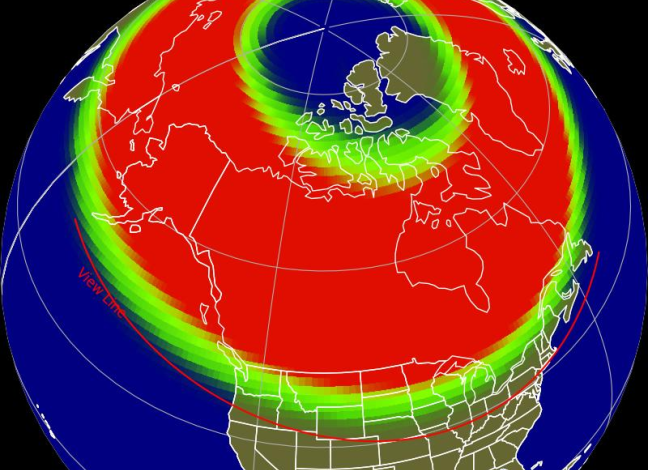Will we see northern lights, power grid impacts amid 'severe' geomagnetic storm?

(NEXSTAR) — As of Wednesday morning, Earth is being hit by a strong solar radiation storm event that will be followed by a geomagnetic storm, space weather officials say.
It’s all thanks to an X1.8 solar flare spotted on the sun overnight. While weaker than the X9 flare detected last week, the flare and its companion coronal mass ejection (CME) could make quite an impact on Earth.
Flares and CMEs aren’t like meteoroids that can find their way to Earth. Instead, their impacts are largely felt within our atmosphere — though we may experience some disturbances down here.
How will the solar flare impact Earth?
The flare has sparked S3 solar radiation storm conditions, according to NOAA’s Space Weather Prediction Center. Storms at this level (on a scale of one to five) are capable of causing radiation hazards for astronauts as well as those on high-flying aircraft who are at high latitudes. Satellites may be disrupted and their solar panels may become slightly less efficient.
“Solar flares are powerful bursts of radiation. Harmful radiation from a flare cannot pass through Earth’s atmosphere to physically affect humans on the ground,” NASA explains. “However — when intense enough — they can disturb the atmosphere in the layer where GPS & communications signals travel.”
With this flare, the SWPC warns that high-frequency radio signals “may experience loss of contact or major disruptions for a number of minutes to a couple of hours in the affected areas.” Storms of this intensity are rare, according to the SWPC, and this particular storm is expected to weaken to S1 or S2 levels through Thursday and Friday.
The CME associated with the X1.8 solar flare, however, may spark more noticeable impacts for us.
Will we see the northern lights?
The SWPC has already issued a geomagnetic storm watch for the next two days due to the “fast” CME that erupted from the sun overnight. It’s traveling between speeds of 1,200 to 1,300 kilometers per second, or more than 2,600,000 miles per hour.
At this speed, it could reach Earth between morning and midday on Thursday, the SWPC says. The CME could spark G4-level storming, the second-highest category possible, but it’s unclear until it’s within 1 million miles of Earth.
Should the storming reach G4 strength, and impact Earth’s atmosphere when we are not in daylight hours, much of the U.S. could have a chance at seeing the northern lights.
G4 storms have been known to bring the aurora as far south as Alabama and northern California. Earlier this year, a powerful G4 geomagnetic storm brought the northern lights all the way to Hawaii, Florida, and Texas.
As of Wednesday morning, the forecast for Thursday night shows the aurora could be visible as far south as northern Missouri and Nebraska and central Illinois and Indiana.
The SWPC’s three-day forecast shows G4 conditions are expected around 2 p.m. ET Thursday through 2 a.m. ET on Friday. These predictions could change, though, as the CME gets closer to Earth and forecasters are better able to analyze it.
Will infrastructure be impacted?
While the northern lights may be a stunning sight, CMEs are also capable of impacting critical infrastructure technology, like our power grids.
Thankfully, any impacts can be mitigated, according to the SWPC.
U.S. power grid operators are kept well-informed about the potential impacts of space weather, SWPC Service Coordinator Shawn Dahl told Nexstar via email last month.
As for now, the SWPC is continuing to monitor the conditions.
The sun is progressing through an active pattern known as Solar Cycle 25 in which it flips its poles. As we near the peak of that 11-year cycle, researchers say we can expect to see more strong solar storms — and, hopefully, more strong bouts of the northern lights.




